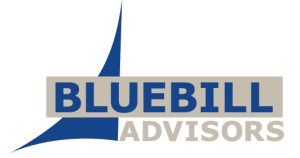Semantic Software Technologies: Landscape of High Value Applications for the Enterprise is now posted for you to download for free; please do so. The topic is one I’ve followed for many years and was convinced that the information about it needed to be captured in a single study as the number of players and technologies had expanded beyond my capacity for mental organization.
As a librarian, it was useful to employ a genre of publications known as “bibliography of bibliographies” on any given topic when starting a research project. As an analyst, gathering the baskets of emails, reports, and publications on the industry I follow, serves a similar purpose. Without a filtering and sifting of all this content, it had become overwhelming to understand and comment on the individual components in the semantic landscape.
Relating to the process of report development, it is important for readers to understand how analysts do research and review products and companies. Our first goal is to avoid bias toward one vendor or another. Finding users of products and understanding the basis for their use and experiences is paramount in the research and discovery process. With software as complex as semantic applications, we do not have the luxury of routine hands-on experience, testing real applications of dozens of products for comparison.
The most desirable contacts for learning about any product are customers with direct experience using the application. Sometimes we gain access to customers through vendor introductions but we also try very hard to get users to speak to us through surveys and interviews, often anonymously so that they do not jeopardize their relationship with a vendor. We want these discussions to be frank.
To get a complete picture of any product, I go through numerous iterations of looking at a company through its own printed and online information, published independent reviews and analysis, customer comments and direct interviews with employees, users, former users, etc. Finally, I like to share what I have learned with vendors themselves to validate conclusions and give them an opportunity to correct facts or clarify product usage and market positioning.
One of the most rewarding, interesting and productive aspects of research in a relatively young industry like semantic technologies is having direct access to innovators and seminal thinkers. Communicating with pioneers of new software who are seeking the best way to package, deploy and commercialize their offerings is exciting. There are many more potential products than those that actually find commercial success, but the process for getting from idea to buyer adoption is always a story worth hearing and from which to learn.
I receive direct and indirect comments from readers about this blog. What I don’t see enough of is posted commentary about the content. Perhaps you don’t want to share your thoughts publicly but any experiences or ideas that you want to share with me are welcomed. You’ll find my direct email contact information through Gilbane.com and you can reach me on Twitter at lwmtech. My research depends on getting input from all types of users and developers of content software applications, so, please raise your hand and comment or volunteer to talk.
